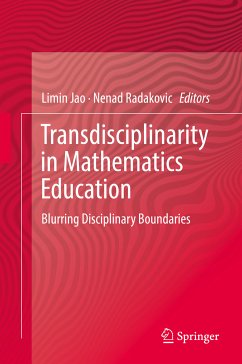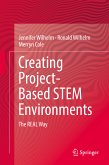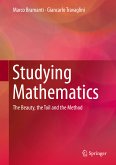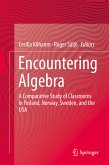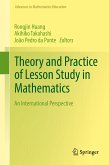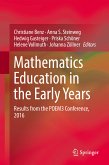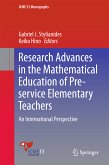Transdisciplinarity in Mathematics Education (eBook, PDF)
Blurring Disciplinary Boundaries
Redaktion: Jao, Limin; Radakovic, Nenad


Alle Infos zum eBook verschenken

Transdisciplinarity in Mathematics Education (eBook, PDF)
Blurring Disciplinary Boundaries
Redaktion: Jao, Limin; Radakovic, Nenad
- Format: PDF
- Merkliste
- Auf die Merkliste
- Bewerten Bewerten
- Teilen
- Produkt teilen
- Produkterinnerung
- Produkterinnerung

Hier können Sie sich einloggen

Bitte loggen Sie sich zunächst in Ihr Kundenkonto ein oder registrieren Sie sich bei bücher.de, um das eBook-Abo tolino select nutzen zu können.
The book explores various facets of transdisciplinarity in mathematics education and its importance for research and practice. The book comprehensively outlines the ways that mathematics interacts with different disciplines, world views, and contexts; these topics include: mathematics and the humanities, the complex nature of mathematics education, mathematics education and social contexts, and more. It is an invaluable resource for mathematics education students, researchers, and practitioners seeking to incorporate transdisciplinarity into their own practice.
- Geräte: PC
- ohne Kopierschutz
- eBook Hilfe
- Größe: 5.29MB
![Creating Project-Based STEM Environments (eBook, PDF) Creating Project-Based STEM Environments (eBook, PDF)]() Jennifer WilhelmCreating Project-Based STEM Environments (eBook, PDF)97,95 €
Jennifer WilhelmCreating Project-Based STEM Environments (eBook, PDF)97,95 €![Studying Mathematics (eBook, PDF) Studying Mathematics (eBook, PDF)]() Marco BramantiStudying Mathematics (eBook, PDF)73,95 €
Marco BramantiStudying Mathematics (eBook, PDF)73,95 €![Views and Beliefs in Mathematics Education (eBook, PDF) Views and Beliefs in Mathematics Education (eBook, PDF)]() Views and Beliefs in Mathematics Education (eBook, PDF)121,95 €
Views and Beliefs in Mathematics Education (eBook, PDF)121,95 €![Encountering Algebra (eBook, PDF) Encountering Algebra (eBook, PDF)]() Encountering Algebra (eBook, PDF)69,95 €
Encountering Algebra (eBook, PDF)69,95 €![Theory and Practice of Lesson Study in Mathematics (eBook, PDF) Theory and Practice of Lesson Study in Mathematics (eBook, PDF)]() Theory and Practice of Lesson Study in Mathematics (eBook, PDF)113,95 €
Theory and Practice of Lesson Study in Mathematics (eBook, PDF)113,95 €![Mathematics Education in the Early Years (eBook, PDF) Mathematics Education in the Early Years (eBook, PDF)]() Mathematics Education in the Early Years (eBook, PDF)105,95 €
Mathematics Education in the Early Years (eBook, PDF)105,95 €![Research Advances in the Mathematical Education of Pre-service Elementary Teachers (eBook, PDF) Research Advances in the Mathematical Education of Pre-service Elementary Teachers (eBook, PDF)]() Research Advances in the Mathematical Education of Pre-service Elementary Teachers (eBook, PDF)73,95 €
Research Advances in the Mathematical Education of Pre-service Elementary Teachers (eBook, PDF)73,95 €-
-
-
Dieser Download kann aus rechtlichen Gründen nur mit Rechnungsadresse in A, B, BG, CY, CZ, D, DK, EW, E, FIN, F, GR, HR, H, IRL, I, LT, L, LR, M, NL, PL, P, R, S, SLO, SK ausgeliefert werden.
- Produktdetails
- Verlag: Springer International Publishing
- Seitenzahl: 279
- Erscheinungstermin: 15. Oktober 2017
- Englisch
- ISBN-13: 9783319636245
- Artikelnr.: 52938729
- Verlag: Springer International Publishing
- Seitenzahl: 279
- Erscheinungstermin: 15. Oktober 2017
- Englisch
- ISBN-13: 9783319636245
- Artikelnr.: 52938729
- Herstellerkennzeichnung Die Herstellerinformationen sind derzeit nicht verfügbar.
